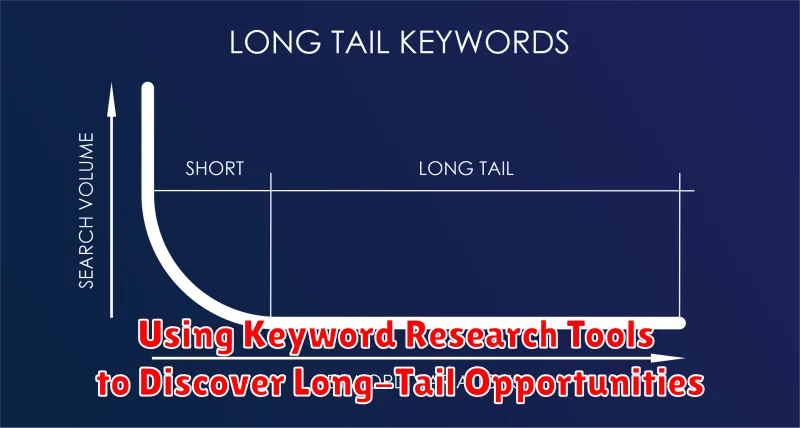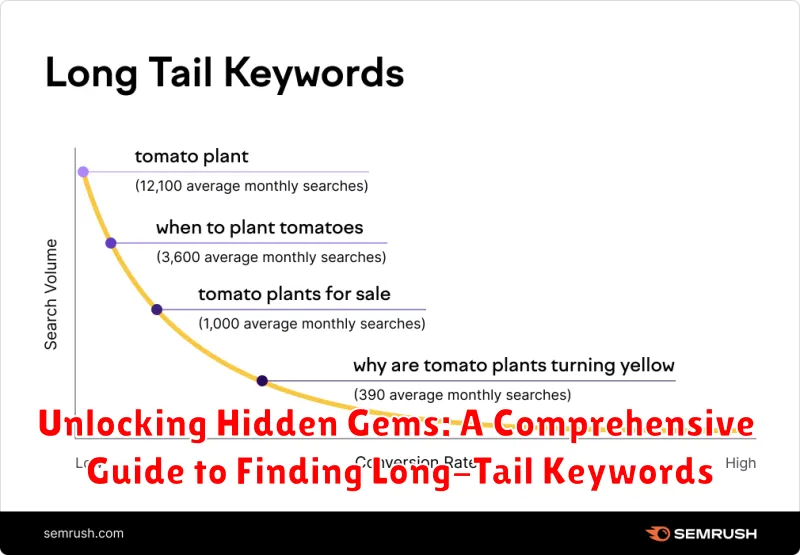In the competitive digital landscape, harnessing the power of long-tail keywords is paramount to online success. This comprehensive guide delves into the intricacies of long-tail keyword research, providing you with the tools and strategies needed to unlock hidden gems that drive targeted traffic to your website. Understanding the nuances of long-tail keywords, their benefits, and how to effectively integrate them into your content strategy is crucial for outperforming competitors and achieving sustainable growth. Whether you’re a seasoned SEO professional or just starting your journey, this guide will empower you to master the art of long-tail keyword identification and optimization.
Long-tail keywords, those longer and more specific search phrases, offer a distinct advantage over shorter, more competitive keywords. They allow you to target niche audiences, improve conversion rates, and enhance your overall search engine optimization (SEO) efforts. This guide, “Unlocking Hidden Gems: A Comprehensive Guide to Finding Long-Tail Keywords,” will equip you with the knowledge and techniques to uncover these valuable keywords and leverage them to maximize your online visibility and reach your target audience effectively. Discover the power of long-tail keywords and transform your online presence.
Understanding the Power of Long-Tail Keywords
Long-tail keywords are longer, more specific keyword phrases that visitors are more likely to use when they’re closer to a point-of-purchase or when they’re using voice search. They typically consist of three or more words.
Think of the difference between searching for “shoes” and “women’s size 7 red running shoes.” The latter is a long-tail keyword. While “shoes” has a higher search volume, “women’s size 7 red running shoes” signals a much higher purchase intent. Someone using this specific search knows exactly what they want.
The power of long-tail keywords lies in their specificity and lower competition. While individual long-tail keywords have lower search volumes, they collectively contribute significant traffic. Because they’re more specific, they attract highly qualified leads—people who are genuinely interested in your products or services.
Why Long-Tail Keywords Matter for Your SEO Strategy
Long-tail keywords are essential for a robust SEO strategy due to their ability to drive targeted traffic and improve overall website performance. Unlike broad keywords, long-tail keywords address specific user searches, connecting you with a more engaged audience.
These highly specific search terms often indicate a stronger purchase intent. Users searching with long-tail keywords are typically further along in the buying cycle, making them more likely to convert into customers. This translates to a higher return on investment (ROI) for your SEO efforts.
Furthermore, long-tail keywords often experience less competition compared to broader terms. This reduced competition makes it easier to rank higher in search engine results pages (SERPs), increasing your website’s visibility to potential customers. Targeting these niche keywords can be a powerful way to gain a competitive edge in crowded markets.
Finally, using long-tail keywords can enhance user experience. By addressing specific user queries, your content is more likely to provide relevant and helpful information. This improved relevance leads to increased user engagement, lower bounce rates, and longer time spent on your website, all of which are positive signals for search engines.
Different Types of Long-Tail Keywords and When to Use Them
Long-tail keywords come in various forms, each serving a specific purpose in user search intent. Understanding these distinctions helps tailor your content effectively.
Question Keywords
These keywords are phrased as questions, directly addressing user queries. Use them when content provides clear answers or solutions to specific problems. For example: “How to bake a chocolate cake from scratch?”
Informational Keywords
Users seeking information employ these keywords. They’re often broader than question keywords but still more specific than head terms. Capitalize on these keywords when offering in-depth explanations or guides. Example: “best chocolate cake recipes for birthdays.”
Transactional Keywords
These keywords indicate a user’s intent to purchase or perform a specific action. Optimize product pages or calls to action with these terms. For instance: “buy chocolate cake decorating kit online.”
Geo-Targeted Keywords
These keywords include a location, targeting users searching for local businesses or services. Implement these keywords for local SEO strategies. Example: “chocolate cake bakeries in Chicago.”
Brainstorming Long-Tail Keywords: Getting Started
Before diving into keyword research tools, brainstorming is a valuable first step to uncover potential long-tail keywords. This process helps you tap into your understanding of your target audience and their needs.
Start by considering your core product or service. What problems does it solve? What are its key features and benefits? List these down.
Next, put yourself in your customer’s shoes. What questions would they ask about your product or service? What terms might they use when searching for solutions online? Think about different variations in phrasing and wording.
Consider the customer journey. Are they researching, comparing, or ready to buy? Keywords will differ depending on the stage of their purchasing process.
Finally, explore related topics and concepts. What other areas of interest might overlap with your offerings? Thinking broadly can reveal unexpected long-tail keyword opportunities.
Using Keyword Research Tools to Discover Long-Tail Opportunities

Keyword research tools are essential for uncovering valuable long-tail keywords. These tools provide data-driven insights into search volume, competition, and related terms, helping you refine your keyword strategy. Several tools offer free versions with limited features, while paid versions offer more comprehensive data and analysis.
Popular keyword research tools include:
- SEMrush
- Ahrefs
- Moz Keyword Explorer
- Google Keyword Planner
- Ubersuggest
These tools typically offer features like keyword suggestions, search volume analysis, and competitor analysis. Utilize these features to identify long-tail keywords relevant to your niche and with reasonable search volume. By leveraging the data these tools provide, you can strategically target long-tail keywords that offer higher conversion potential.
Analyzing Competitor Strategies for Long-Tail Keyword Inspiration
Understanding your competitors’ keyword strategies is crucial for uncovering valuable long-tail keyword opportunities. By analyzing their approach, you can identify gaps and niches they may have overlooked.
Several tools and techniques can assist in this process. Competitor analysis tools can reveal which keywords are driving traffic to their sites. Examining their website content, particularly blog posts and product descriptions, can highlight the specific long-tail keywords they’re targeting. Pay attention to the language they use and the questions they answer.
Focus on identifying keywords that are relevant to your business but not overly competitive. These often represent untapped opportunities to attract a highly targeted audience. Look for keywords that address specific customer needs or pain points. This analysis can provide valuable insights into the search terms potential customers are using and help you refine your own keyword strategy.
Refining Your Long-Tail Keyword List for Maximum Impact
Once you’ve compiled a substantial list of potential long-tail keywords, the next crucial step is refinement. This process ensures your keywords are truly relevant to your target audience and offer the best chance for improved search rankings and increased organic traffic.
Begin by analyzing search intent. Understand what users are actually looking for when they type a specific long-tail keyword into a search engine. Are they seeking information, looking to purchase a product, or something else entirely? Align your keywords with the specific needs and desires of your target demographic.
Next, assess keyword relevance. Ensure each keyword strongly relates to your products, services, or content. Irrelevant keywords will attract the wrong audience and negatively impact your conversion rates.
Finally, prioritize keywords with reasonable search volume. While highly specific long-tail keywords often have low individual search volume, they can collectively drive significant traffic. Use keyword research tools to identify keywords with a balance of specificity and search volume.
Integrating Long-Tail Keywords into Your Content Strategy

Once you’ve refined your list of long-tail keywords, the next crucial step is seamlessly integrating them into your content strategy. This involves strategically placing these keywords within your website content to improve search engine visibility and attract targeted traffic.
Natural Integration is Key
Avoid keyword stuffing. Focus on naturally incorporating your long-tail keywords into your content. They should fit seamlessly within the flow of your writing and enhance the user experience, not disrupt it. Think about how a user would naturally phrase a search query and use that insight to guide your keyword placement.
Strategic Placement for Optimal Impact
Consider placing long-tail keywords in strategic locations within your content. This includes page titles, headings, meta descriptions, and within the body of your text. However, prioritize user experience over keyword optimization. Content should always be readable and engaging.
Content Diversity for Broader Reach
Diversify your content formats to cater to different audience preferences and maximize your reach. Consider incorporating blog posts, articles, videos, infographics, and other formats that allow you to naturally integrate your target keywords.
Measuring the Success of Your Long-Tail Keyword Efforts
After implementing your long-tail keyword strategy, consistent monitoring and measurement are crucial to determine its effectiveness. Tracking key performance indicators (KPIs) provides valuable insights into which keywords are driving results and where adjustments are needed.
Organic Traffic Growth: Monitor increases in organic search traffic specifically attributed to your targeted long-tail keywords. This demonstrates the effectiveness of your keyword research and content optimization.
Conversion Rates: Analyze how well your long-tail keywords are converting visitors into customers. Higher conversion rates for specific keywords signify a strong alignment between search intent and your offered product or service.
Keyword Ranking Improvements: Track your rankings for targeted long-tail keywords in search engine results pages (SERPs). Improved rankings indicate increased visibility and potential for higher click-through rates.
Bounce Rate: A lower bounce rate for pages optimized with long-tail keywords suggests that the content effectively addresses user queries and provides relevant information.

